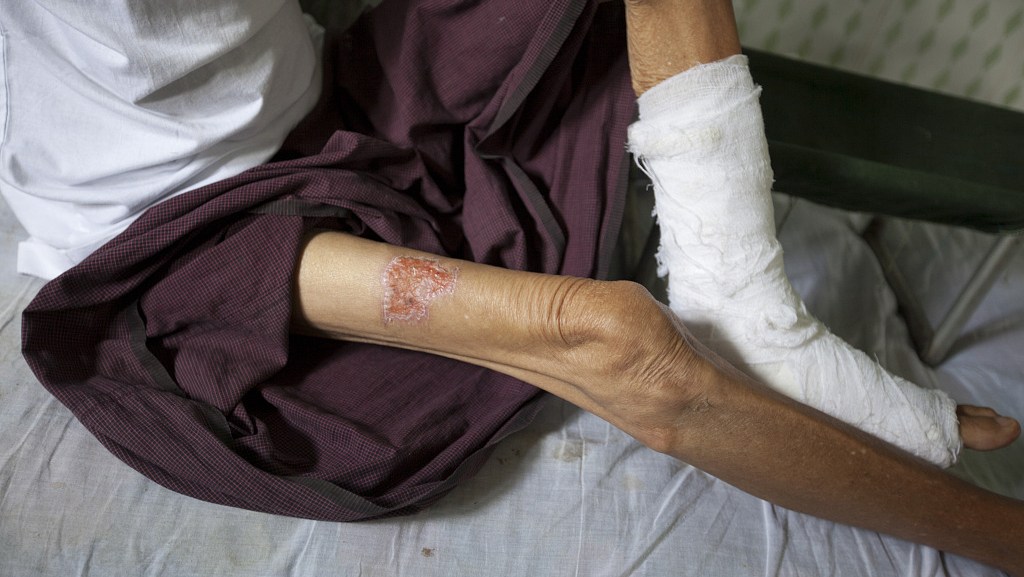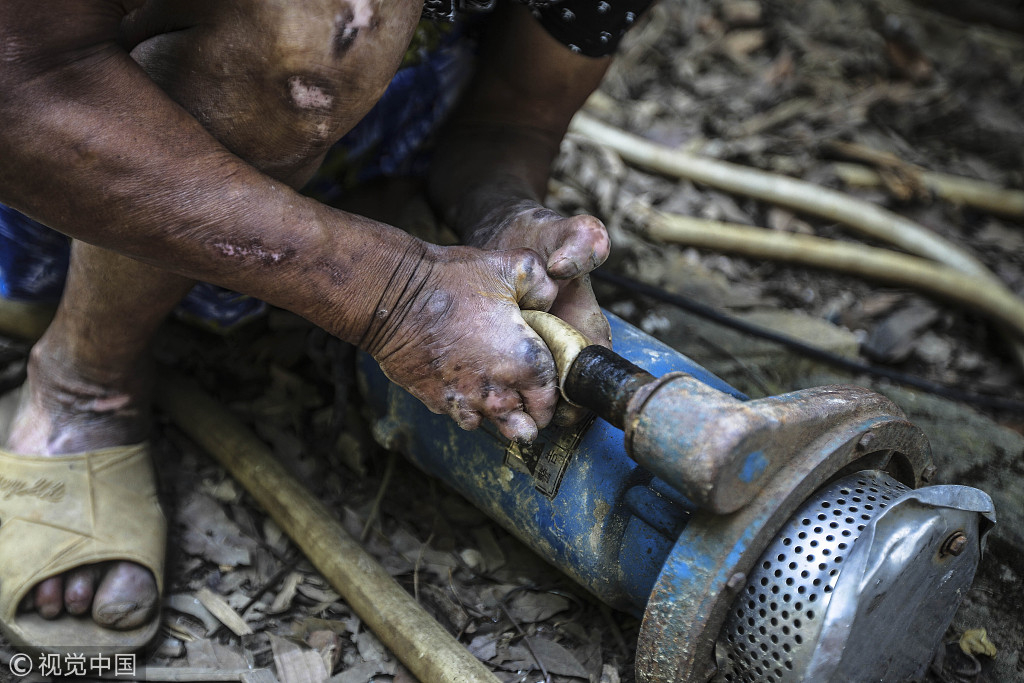
Health
16:13, 27-Jan-2019
Eliminating discrimination, caring for the lepers
By Huang Yonghua

Editor's note: Huang Yonghua, professor and director of Dermatology at the Nanhai Hospital affiliated to Southern Medical University.
Leprosy is a chronic
infectious disease caused by Mycobacterium
leprae, which mainly invades the skin, peripheral nerves, mucosa of the
upper respiratory tract and eyes.
If not treated timely, leprosy may result in
progressively permanent damage to the patient's skin, nerves, limbs and eyes.
Leprosy is one of the major diseases leading to disability. The main epidemic regions of leprosy include Asia, Africa and South Africa.

A leper's leg /VCG Photo
A leper's leg /VCG Photo
According to WHO's report covering 138 countries, the registered global prevalence rate of leprosy was 0.18 cases per 10,000 people, totaling 176,176 cases at the end of 2015. From 2006 to 2015, the global new leprosy cases decreased by 20.7 percent within 10 years and a 7.0 percent decline in the last five years.
In China, the incidence of leprosy decreased from 85 percent in 2011 to 49 percent in 2015, with an annual decrease of 12.9 percent.
Since the in vitro culture of Mycobacterium leprae is not successful at present, no vaccine can be used for preventing leprosy.
At present, the most effective prevention measure is to find potential patients and give them combined chemotherapy.
Therefore, the key of treating leprosy is to identify its early symptoms like skin lesions of leprosy including light stain, erythema, papule or plaque, etc., which can be accompanied by symptoms such as loss of sensation and sweating, dry skin and trichomadesis.

Leper's hands /VCG Photo
Leper's hands /VCG Photo
Check out the symptoms as below:
1. The face is puffy, red and bright, which is like that of a drunken person. Leprosy can easily be misdiagnosed as allergic dermatitis, eczema and seborrheic dermatitis.
2. Dry erythema, nodules or plaque can be observed on the trunk and extremities. It can easily be misdiagnosed as tinea or erythema annulare centrifugum.
3. Congestion, swelling or erosion of nasal mucosa can be observed. With the progression of a disease, skin lesions are wider, and the infiltration is much more obvious. A few skin lesions can form the nodule. It can be easily misdiagnosed as the nasal sinuitis or the rosacea.
4. Sparse eyebrow, loss of eyebrow and ant trace on the face. It can be easily misdiagnosed as alopecia areata or alopecia.
5. The skin's loss of sensation and sweating. It can be easily misdiagnosed as peripheral neuritis.
6. The skin ulcer is mostly secondary to vascular dysfunction, poor local circulation, and local nerve damage. The ulcer caused by various physical injuries due to the skin's loss of sensation is called the secondary ulcer of leprosy.

A leper in Fujian Province /VCG Photo
A leper in Fujian Province /VCG Photo
At present, it is generally accepted that leprosy is transmitted by air through droplets from the nose and mouth, or during long-term contacts with untreated cases. But the exact transmission mode remains unclear.
According to WHO, the incubation period of leprosy is five years in general and sometimes can last 20 years. When there were few trained doctors and very little medicine, isolation was the only way to interrupt transmission. Therefore, there were many "leprosy villages" at that time.
With the recognition of this disease and the development of drugs, leprosy is curable by combined chemotherapy.
When Mycobacterium leprae of the leper is killed, the person should no longer be deemed as the leper.
Although leprosy has the genetic susceptibility, current studies believe that leprosy is not a genetic disease or a congenital one. After having been infected by Mycobacterium leprae, only a few people have leprosy.
(If you want to contribute and have specific expertise, please contact us at opinions@cgtn.com.)

SITEMAP
Copyright © 2018 CGTN. Beijing ICP prepared NO.16065310-3
Copyright © 2018 CGTN. Beijing ICP prepared NO.16065310-3